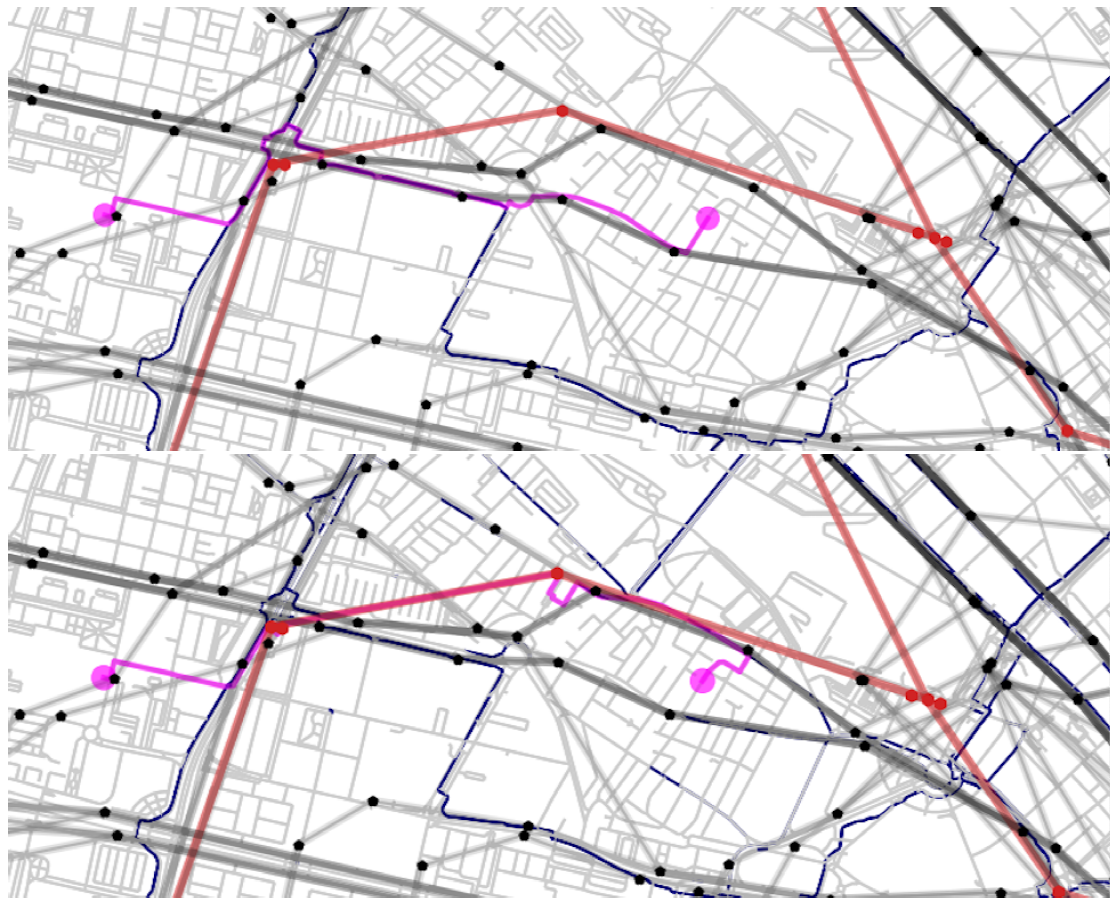by Christian Cintrano, Gabriel Luque, and Jamal Toutouh (University of Málaga)
Exploring the fusion of advanced technology and urban planning, the HUMOVE project is pioneering diverse smart mobility solutions, each designed with a human-centred approach. From enhancing pedestrian pathways to optimising e-scooter and electric vehicle infrastructures, discover how these case studies are actively redefining sustainable urban transport for a variety of city residents.
As the world urbanises at an unprecedented rate, the pressure on urban transportation infrastructure has never been more intense. The HUMOVE (Human-centred Smart Mobility) project [L1], led by experts from ITIS Software [L2] at the University of Málaga, focuses on rethinking urban mobility from a human-centred perspective, offering solutions that address both social and environmental needs.
HUMOVE is committed to creating intelligent mobility solutions that anticipate the needs of a growing and diverse urban population. The project takes a comprehensive approach, integrating advanced technologies and inclusive design to improve the mobility experience for pedestrians, cyclists, electric vehicle drivers, and public transport users. In this project, we have developed multiple intelligent systems to improve mobility from the citizen’s point of view. In the this article, we will detail two use cases as representative examples of the project’s results.
Our first example is a plan to smoothly integrate e-scooters into the city environment. This task aims to improve the current road infrastructure to make e-scooters a practical part of the city’s multi-modal transport system [1]. The main objective is to enhance the connectivity and extend the coverage of bike lanes designed specifically for e-scooter use while keeping the implementation costs as low as possible.
We are taking a holistic approach to urban mobility by redesigning roadways to accommodate e-scooters and bicycles. Our goal is to create a more inclusive and efficient transport network. Introducing dedicated lanes will provide safer and faster travel for e-scooter users and help reduce congestion in urban centres.
Moreover, the strategic placement of these new infrastructures is guided by a comprehensive analysis that balances the benefits of improved travel times against the financial implications of road modifications. Through careful planning and the use of multi-criteria optimisation techniques, it has successfully identified key areas within Málaga city (Spain) where interventions would yield the most significant impacts. This methodical placement ensures that investments are made where they can provide maximum benefits in terms of accessibility and user satisfaction.
The outcomes from this service highlight a promising reduction in travel times for e-scooter users, which is instrumental in promoting wider adoption of this sustainable mode of transport. Additionally, the economic analysis accompanying the infrastructure developments confirms that the enhancements are not only feasible but also cost-effective, considering the long-term benefits of a more sustainable urban mobility system.
This case study from the HUMOVE project serves as a compelling example of how thoughtful integration of e-scooters into city planning can lead to significant improvements in urban mobility. It demonstrates a scalable model for other cities aiming to embrace sustainable transportation solutions and underscores the potential of e-scooters to contribute to a more dynamic and environmentally friendly urban environment (see Figure 1).

Figure 1: Example for the same route (fuchsia line) using the current infrastructure (top) and the proposed infrastructure (bottom). It shows how the proposed route allows combining e-scooter paths (blue lines) with public transport (red lines).
Another noteworthy application developed in the HUMOVE project focuses on optimising the placement of electric vehicle charging stations (EVCS) [2]. This initiative seeks to maximise the quality of service for electric vehicle users while simultaneously minimising deployment costs, embodying a quintessential smart city solution. This dual-objective approach is crucial as it ensures that EVCS are both accessible and economically viable.
The service uses advanced multi-objective metaheuristics to solve the location problem, considering various types of EVCS, each differing in service speed and cost. This strategy allows the city to cater to diverse user needs, from quick charges for commuters to deeper charges for longer-stay vehicles. The quality of service is assessed by how many users an EVCS can serve within its neighbourhood, reflecting its effectiveness in accommodating the city’s electric mobility demand.
The economic impact is meticulously analysed through the costs associated with installing each station type and integrating them into the existing power grid (see Figure 2). By strategically placing these stations in optimal locations, the project aims to enhance the overall efficiency of the city’s transportation network, reduce carbon emissions, and promote the adoption of electric vehicles.

Figure 2: Citizen clusters, electrical substations, and road map of Malaga, Spain. Each edge represents a street segment associated with a substation.
The findings are promising, showcasing a potential improvement in terms of the number of vehicles loaded per hour, thus improving driver satisfaction without necessitating prohibitive costs. Such outcomes not only bolster the feasibility of electric vehicles as a sustainable transport option but also provide a scalable model that other cities could adopt, marking a significant step forward in urban mobility planning.
This application of this project vividly illustrates the potential of integrated, data-driven approaches to address complex urban challenges, paving the way for smarter, more sustainable cities.
In conclusion, the HUMOVE project represents not only a technical advancement but also a shift towards more inclusive and sustainable mobility. The applications detailed herein are just two examples of the myriad challenges addressed by the project, which continues to explore new frontiers in the design of intelligent transportation systems. By placing people and the planet at the heart of its priorities, HUMOVE is actively shaping the future of urban transport, demonstrating a commitment to comprehensive, human-centred solutions.
Links:
[L1] https://neo.lcc.uma.es/new/humove/
[L2] https://itis.uma.es/
References:
[1] D. D. Pedroza-Perez, J. Toutouh, and G. Luque, “Optimizing urban infrastructure for e-scooter mobility,” EvoApplications@EvoStar 2024, pp. 341–357.
[2] C. Cintrano and J. Toutouh, “Multiobjective electric vehicle charging station locations in a city scale area: Malaga study case,” EvoApplications@EvoStar 2022, pp. 584–600.
Please contact:
Gabriel Luque, University of Málaga, Spain











